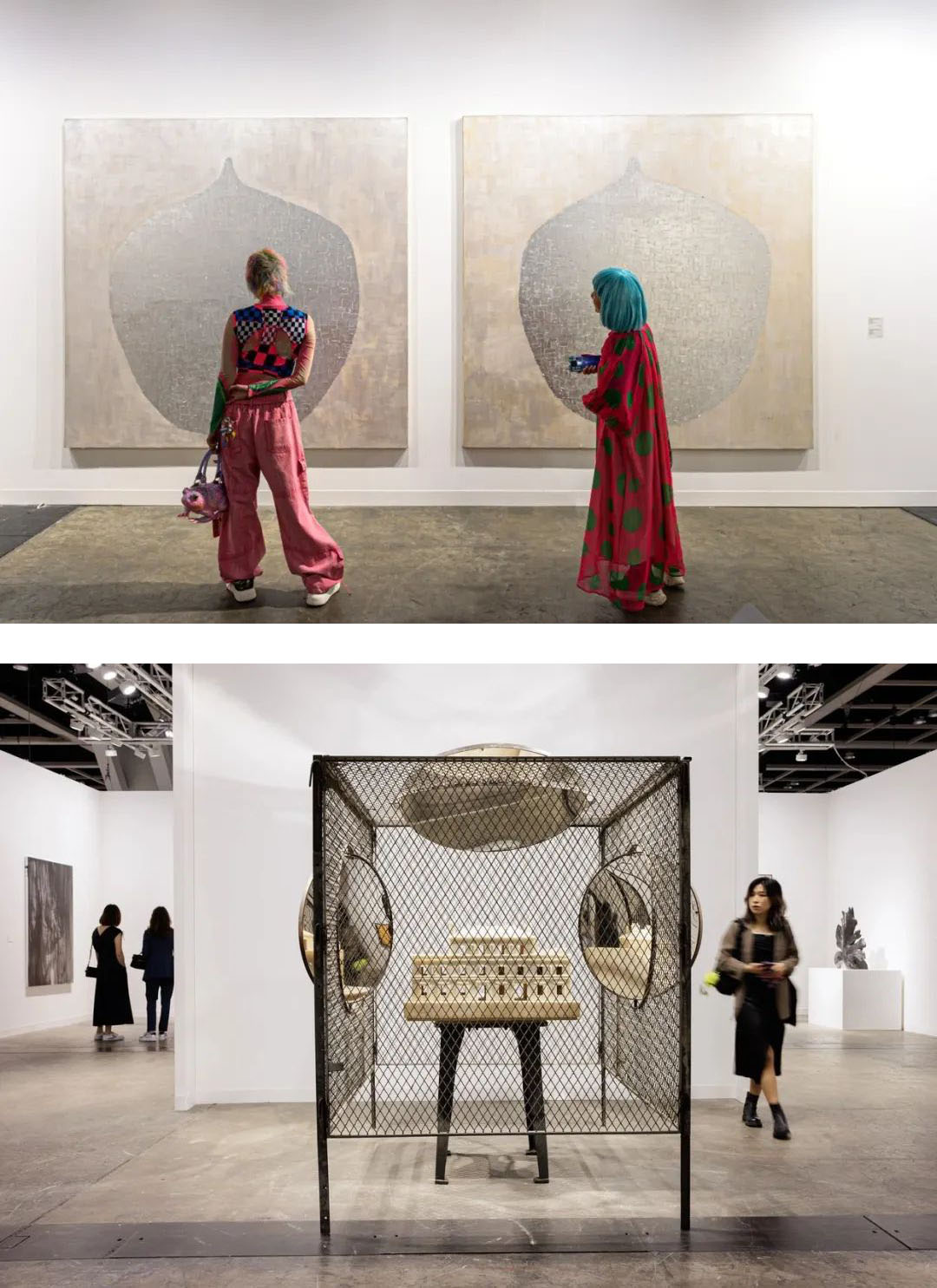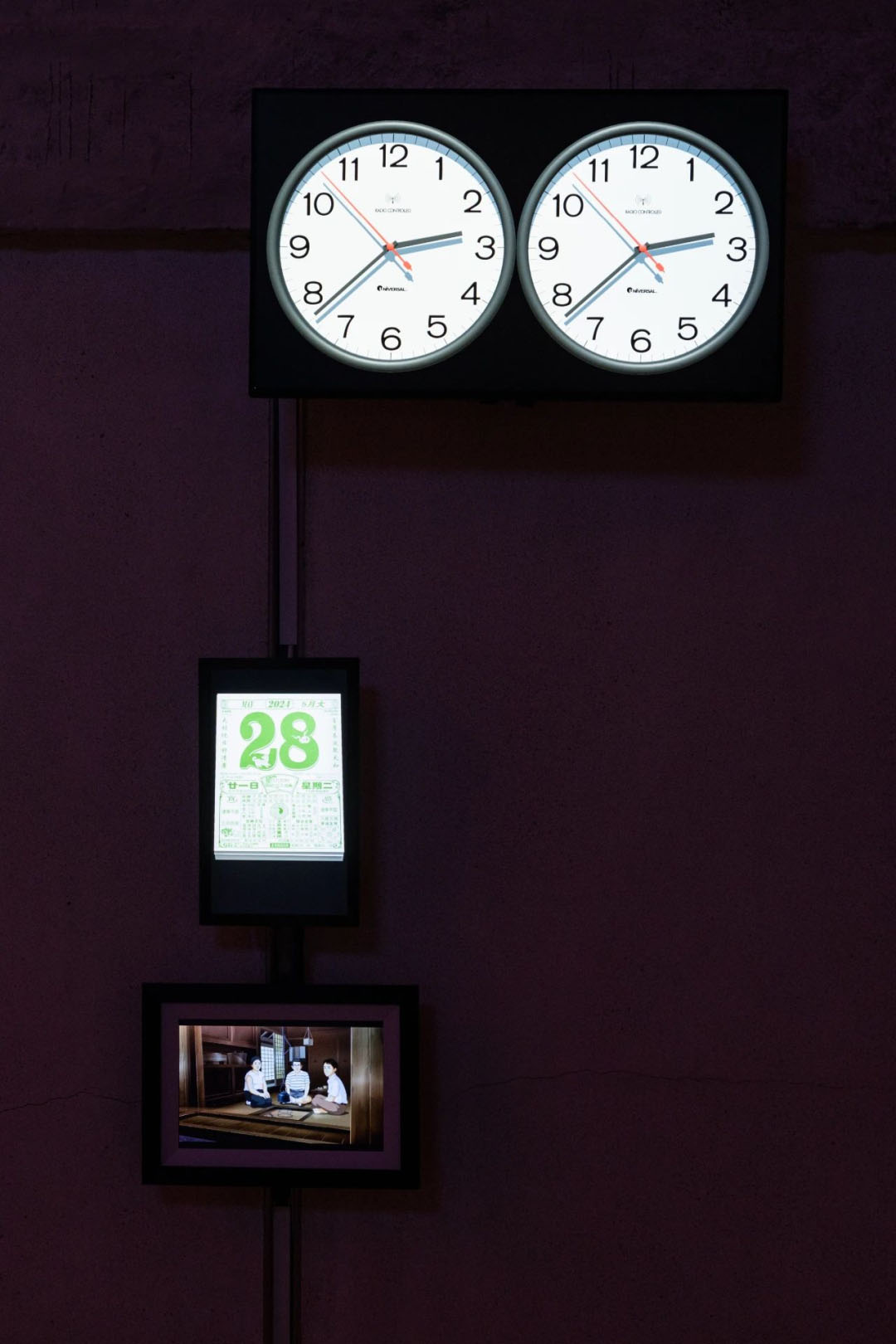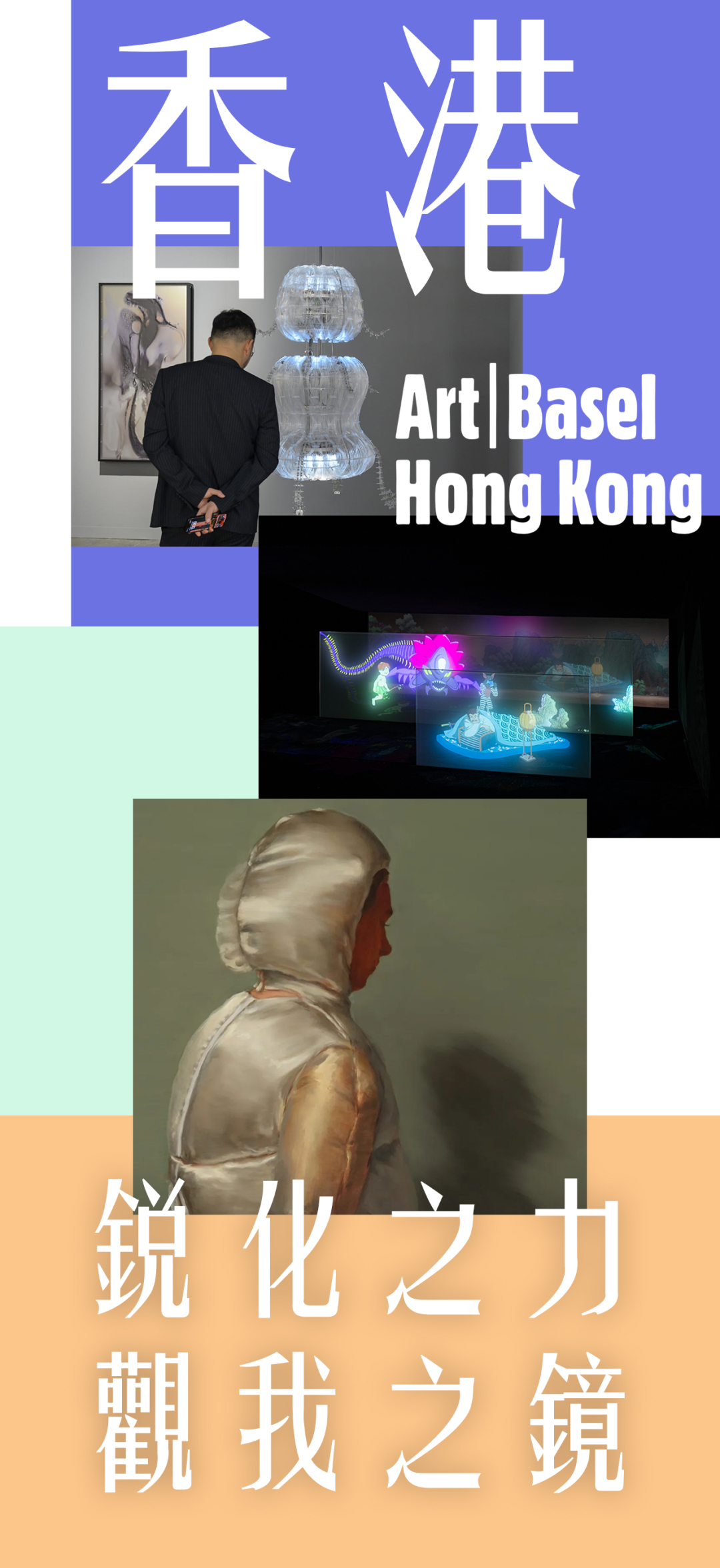
The migration routes of the art world resemble those of migratory birds.People tirelessly shuttle back and forth between north and south, following the seasons, winds, and events, either gathering or dispersing. By late March each year, artists, galleries, institutions, and collectors flock to Hong Kong with fresh works and curiosity, arranging and displaying their dazzling plumage in the capricious southern winds. The routine calibrations and adjustments are neither inherently good nor bad—they are merely objective, habitual actions. Thus, the validity of observation and critique must be rooted in the fluctuating narratives between past and present, self and others.
What ultimately comes into view is not the shortcomings of others, but the transformations unfolding within ourselves.
1 Vertical Gaze: Hong Kong’s Three Post-Pandemic Years
This March, Hong Kong’s weather vacillated between near-summer heat and chilly spring rain. Since the city reopened its borders in January 2023, we have witnessed three editions of Art Basel Hong Kong (ABHK). From the palpable skepticism and sell-offs plaguing Hong Kong—or rather, the Chinese art market—in 2023, to the capital tides shifting ambiguously between China, Japan, South Korea, and Thailand in 2024, and finally to this year’s recalibration of institutions, creations, galleries, and fairs across the spectrum of reality and imagination, ABHK has undeniably acted as a convective force, stimulating the local and surrounding ecosystems in its annual rhythm of renewal.
By mid-March, the discourse hubs centered on the Kowloon Peninsula and Hong Kong Island were already abuzz. From an independent curator’s immersive perspective, a fulfilling and exhilarating art marathon would unfold across four districts: Kowloon, Central, Causeway Bay, and Wong Chuk Hang. Here, one encounters exhibitions and spatial creations that grapple with familiar yet evolving themes—ecology, geopolitics, identity, and gender—swiftly enveloping the senses. Regardless of their origins, those flocking to Hong Kong at this time are driven not just by the physiological urge to congregate but, more importantly, by a renewed curiosity, projection, and validation of this region.
Like the enduring trade hubs along the Huangpu River, Hong Kong, as a port connecting East Asia, Southeast Asia, and the Commonwealth, thrives on pragmatic circulation and flexible negotiation. Yet, unlike the fertile, temperate culture of the Yangtze Delta, Hong Kong’s waters and shores have never been truly calm. Beneath its colorful urban facade lies sharp, even caustic introspection, shaping its contradictory and restless expression—precisely why we often find ourselves gazing toward this neighboring island.However, in recent years, galleries displaced by rising rents have had to adapt their strategies and curatorial choices. How does this affect their projects and reputations? What issues do Hong Kong artists reveal through their exhibitions? Does this year’s ABHK reflect shifts in the local contemporary art ecosystem? And what emotions does Hong Kong mirror for us, and we for it? These are the signals I’ve gleaned from my journey.
2 Zooming In: A Whirlwind Tour Around the Island
Last week, arriving at the West Kowloon high-speed rail station, one might hesitate whether to first visit the M+ Museum—accessible for free with an ABHK VIP pass—given its proximity and usual steep ticket prices. Compared to last year's French exhibition “Black & White: an aesthetic of photography” or Sun Yuan and Peng Yu's provocative installation “Old People's Home”, this year's Picasso showcase, the museum's first major collaboration with MoMA, reflects M+'s institutional pivot toward polished, crowd-friendly content over radical contemporary experimentation. So, I headed straight for the MTR station—Picasso could wait; the exhibition wasn't going anywhere, nor was it eager to debate.
A few subway stops and a cross-harbor tunnel later, I emerged in Central. The Island Line connects Central, Wan Chai, and Causeway Bay, home to several galleries on my itinerary: the temporary space of Capsule Gallery on Hollywood Road, Edouard Malingue Gallery on Sik On Street, and PHD Group atop an Eastern District commercial building.
The distances between them were neither too far nor too close, with leisurely walks extending to Sheung Wan and North Point—perfect for digesting thoughts. Capsule Gallery's three-week group exhibition in a compact White-ube space featured an eclectic mix of installations, sculptures, and paintings, meticulously curated by Hong Kong's Zoie Yung. From Nicki Cherry's suspended legs in Holding Pattern (2025) to Elizabeth Jaeger's scattered gray Rat (2024) and the reclining ceramic dogs by the window, the spatial rhythm felt harmonious and engaging.
Most of the route follows a straight eastward path, and soon one arrives at H Queen’s, the location of this year's small-scale art fair, Supper Club. It is also a building where several prestigious galleries have gathered successively. Over the past few years, Art Gallery One and Hauser & Wirth, considering their own development, withdrew from this building one after another. Supper Club, which started as a venue for the Fringe Club in the same month last year, was jointly organized by several local Hong Kong institutions, curators, and venue organizers. It brought together over twenty emerging fine art galleries to build their own stage and could also attract attention with its capital. Different from the form of the club corridor last year, this year's Supper Club was directly moved into the heart of Central by H Queen’s and has a sense of being like a group of heroes from the Liangshan tribe. Meanwhile, the participating galleries and artists also showcased their differentiated style considerations on the limited exhibition space.
In the post-pandemic era of Hong Kong, the co-founders of Supper Club, Willem Molesworth and Ysabelle Cheung, established the contemporary art gallery PHDGroup on the top floor of a private commercial building in Causeway Bay two years earlier (in 2022), which is a typical example of a "serial entrepreneur"; and the entry of SuperNova generally also indicates the renewal of the market and content. This time, PHD Group showcased the personal project "Animale" by artist Yuriko Sasaoka. She used the flexibility of combined split-screen images to create collage works of elements such as eyes and facial features, creating a strange and comical visual experience in the puppet show-like dynamic pauses. Although the entire exhibition space was not large, the extremely pure dopamine colors and the tension of the installation works themselves compensated for the spatial limitations, allowing the audience to more quickly enter another surreal world. The list of PHD Group's collaborating artists is not long, but by pushing Yuriko Sasaoka to the Shanghai Power Station of Art (PSA), and pushing Michele Chu to important institutions Para Site and the booth of ABHK Gallery this year, its sense of the niche market and deep brand strategy undoubtedly represent another way of survival compared to traditional gallery giants.
If the mixed group exhibition at the Capsule Gallery is the perfect alignment of time and space, and the lightweight exhibition at the Supper Club is the win-win cooperation among foreign galleries, then the Edouard Malingue Gallery, which has been rooted in Hong Kong Island for a longer time, has a more flexible and ingenious response to Hong Kong. Before the intermission, the Edouard Malingue Gallery was my last stop before heading south to the Wong Chuk Hang area. It was probably also the place where I spent the most time, took the most photos, and had the most profound thoughts - this feeling is inseparable from my expectations for Ho Tzu Nyen: "The Hundred Nights" series before my trip; but it is not so much an expectation for being present at the current exhibition site, but rather it also adds the previous year's solo exhibition by Hong Kong artist Wong Ping and the year before last's solo exhibition by Zheng Bo and Liu Yin, all of which are high-quality immersive exhibitions, which have already laid a very good audience foundation for this gallery.
This time, Ho Tzu Nyen's exhibition at Edouard Malingue Gallery at Sik On Street Space is titled "Three Realms: Monsters, Opium, Time". Each of the works originally presented in darkroom slides and flat light video rooms, in harmony with the spatial characteristics of each floor of this four-story standalone building, evokes a sensory experience akin to the afterlife, the human world, and the paradise. "Night March of Hundred Monsters—100 Little Demons”(2025) is a brand-new video installation in this series that marks its fifth year. Three layers of glass sheets are parallelly and obliquely inserted into a black box, allowing viewers to experience a continuous nightmare-like scene. The ghosts depicted here are not only a realistic reflection of the ghosts of imperialism but also project more rewrites and imaginations about real history and figures. The third realm of the three realms features an exceptionally high-ceilinged space that, through transparent film and over forty "Chronometer" series, creates an ethereal place filled with various forms of time and philosophical thoughts.
When it comes to time, it seems to be a grand and vague concept. However, through a series of continuous comparisons and materialization, similar vast propositions can now be clearly captured, perceived and collided with. Similar experiences are actually felt in discussions involving keywords such as gender, geography, ethnicity and ecology. I also have the same "sharpening sensation" when looking back at Admiralty. Taking the South Island Line, it seems to only take a quarter of an hour to arrive at Hong Kong's "East London" area: Wong Chuk Hang. Industrial and experimental qualities are often associated with this area's artistic practices. In history, Wong Chuk Hang has successively served as Hong Kong's coastal resort area and industrial frontier, retaining the hard style of buildings and roads. At the same time, the relatively relaxed overall environment also accommodates and supports many creative and exhibition practices that directly connect with global narratives.
The Blindspot Gallery divided the space into two sections. On one side was Chen Wei's solo exhibition "Silent Breath", and on the other was Sin Wai Kin's self-image experiment, titled “The Time of Our Lives”. In my opinion,Sin Wai Kin is a very typical foreign Hong Konger. As a queer, their visual language forms and gender-related concepts have a strong American sitcom and Shakespearean tragic drama sense, while also featuring the introspection and caution of Hong Kong artists. This exhibition consists of three video works and several pieces created on both the gallery and ABHK booths that are removed from makeup paper. The space was divided into three relatively independent viewing areas by two walls. The Dual-Channel video "The Time of Our Lives" (2024), created using a similar form of American comedy talk show theater, placed the audience between the stage and the audience seats on two screens, enveloping them into a holistic comedic wormhole.
The artist creates an engaging surreal narrative by portraying different characters as they shift between various phases. Using a sci-fi narrative structure, they quickly construct a captivating story. To some extent, this blurs the boundaries between reality and fiction, challenging and breaking through the binary gender, linear time, and the established notions of "self" and "other" held by the audience. What I am more concerned about, however, is the individual's understanding and blending of different cultures, and whether this can generate alternative responses to the social realities faced by multiple identities of the individual, as well as whether audiences from different backgrounds can link to a deeper introspective approach from a piece of highly valuable makeup stamping paper - of course, I hope this gap can be expanded, so that "revitalization" can occur.
3 Perspective: Stones from Other Hills Can Polish Jade
Returning to Wan Chai, rather than viewing ABHK as a trading platform, it is more accurate to say that this on-site experience has allowed me to better perceive Hong Kong as a mirror - it not only reflects market strategies but also reveals hidden social sentiments, and even prompts individuals to re-examine their own positions and perceptions. Southern artists, those discussing the south, and those choosing to move south, most of them are inseparable from geographical ecology and introspection of the body. But after a burst of excitement, then what? It seems that there are still many unresolved questions following the problem. For example, Western galleries such as Harald St, which just celebrated its 20th anniversary in London this year, presented the personal project of artist Poppy Jones born in 1985. The velvety paintings that blur the boundaries between photography and painting only allow for the reflex of "buy if you like", and the price of 10,000 to 20,000 RMB also reflects the positioning and imagination of many commercial galleries for the Chinese market nowadays.
The fact that some Western galleries still operating in Hong Kong, such as David Zwirner and White Cube, reflect a different set of considerations for ranking ABHK as one of the top 3 most important art fairs of the year. On their large first-floor exhibition space in the convention center, they present a series of comprehensive "family portraits" that span both Chinese and Western art, with a wide range of prices. The list includes not only "big names" such as Georg Baselitz, Tracey Emin and Mamma Andersson, who have been beloved by Asian collectors for many years, but also works by Chinese artists like Zhou Li and Shao Fan.
During the global market adjustment period, this art fair, regarded as "Hong Kong's attempt to regain its position as the Asian leader", did not perform poorly this year in any aspect. On the contrary, the new faces that appeared at the gallery booths, the Discovery public exhibition area, the screening sessions and lectures (such as Zhang Ruyi's new book launch) still demonstrated its high level from a practical perspective. This made me think of the "Shenzhen Art Week" that Shenzhen has been vigorously promoting in the same period in recent years. Now, the competition and interaction between Guangdong, Hong Kong and Macao are forming a brand-new holistic ecosystem; embracing and promoting the successive waves of new trends is an effective way to "restore" or "protect" independent creativity.
Therefore, if we use the performance of the art market to verify some conjectures, the Hong Kong Basel Art Fair and Sotheby's evening auctions remained stable this year, with both good and bad pieces present in equal measure – but the good ones won't always be the same ones, and the bad ones will also change. It is the changing winds that make people have to seasonally return to the port area to absorb or criticize this year's program list, at least to remain present and interact with the changes. What is the effect of going south every year? In simple terms, it is because the multi-faceted advancement of Hong Kong always sharpens, reflects, and maintains prudence. Studying art is never about attending art fairs (or art trade fairs), but taking a day-long adventure as an initial step to enter the art world is more than sufficient; just like learning to swim always requires first going into the swimming pool to experience the water temperature and pressure, but just soaking in the water without leg movements, arm swings, and breathing techniques is of no use at all.
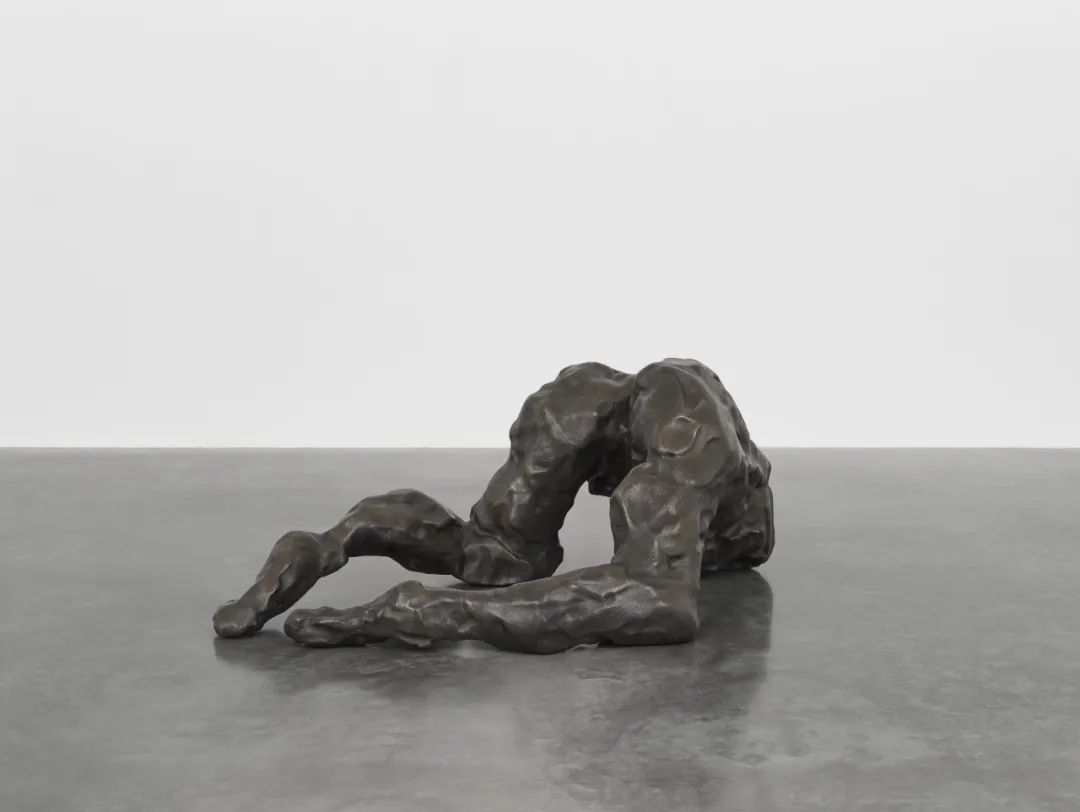
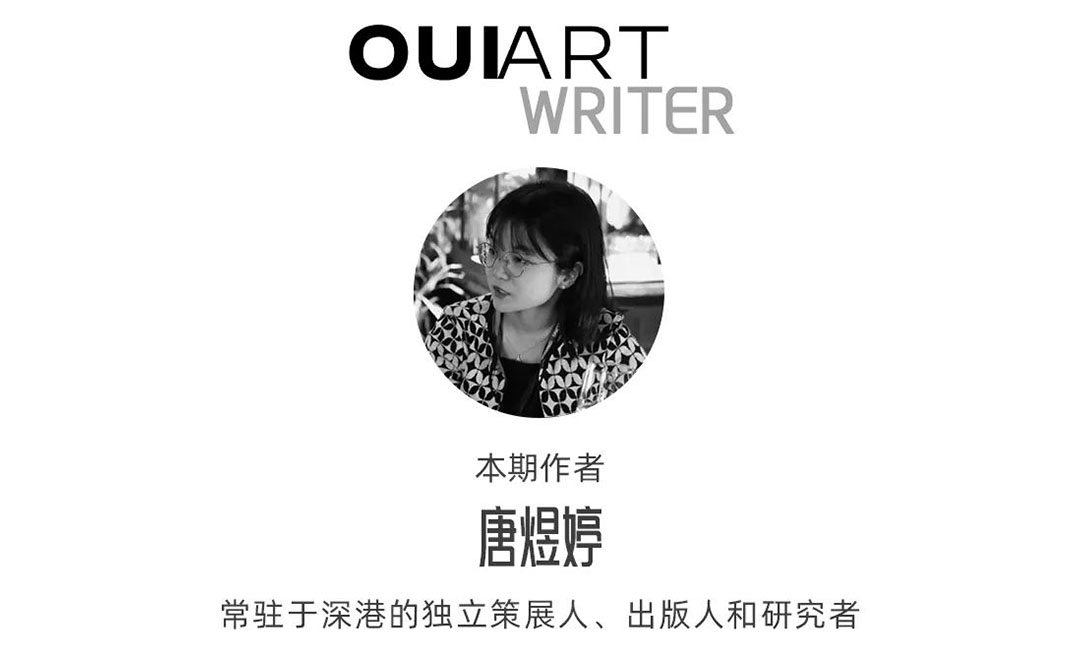
Producer: Tiffany Liu
Editor: Tiffany Liu
Designer: Yizhou Shen
Image: Courtesy of Art Basel Hong Kong and various galleries mentioned in the article


